- Home
- slideshows
- miscellaneous
- 12 autism facts that show how our understanding of the disorder has transformed over the past 76 years
12 autism facts that show how our understanding of the disorder has transformed over the past 76 years
Autism diagnoses are grouped into a broad range of conditions that range from subtle to debilitating. These conditions are called "Autism Spectrum Disorders."

Autism manifests a little bit differently in each person. Some of the most common symptoms include trouble making eye contact, and difficulty maintaining a regular back-and-forth conversation.
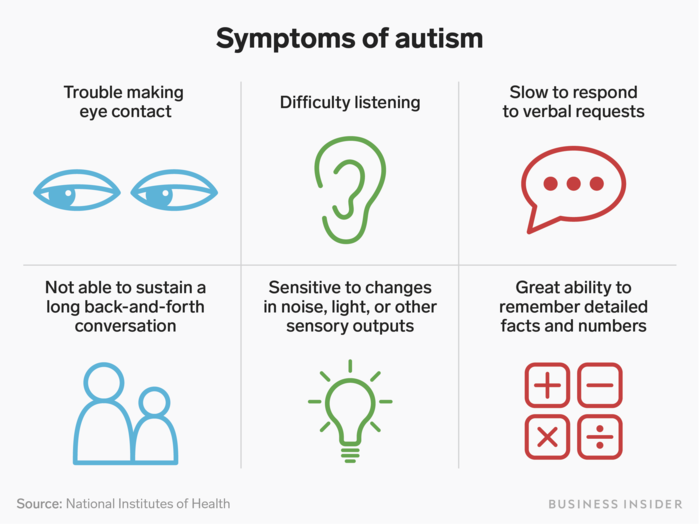
The following are 7 "red flags" that the US Centers and Disease Control has identified for parents who are concerned their child may have autism:
- A child not responding to his/her name by 1 year old
- A child not pointing to objects he or she is interested in by 14 months old
- A child not playing pretend games by 18 months old
- Avoiding eye contact
- Getting upset about minor changes (in a schedule, in their surroundings, etc.)
- Repeated movements like flapping hands, rocking, or spinning in circles
- Unusual or intense reactions to how things look, feel, taste, and smell
The prevalence of autism diagnoses is rising in young children, but that is not necessarily an indication that there are more autistic people being born. It could just be that more cases are being diagnosed.
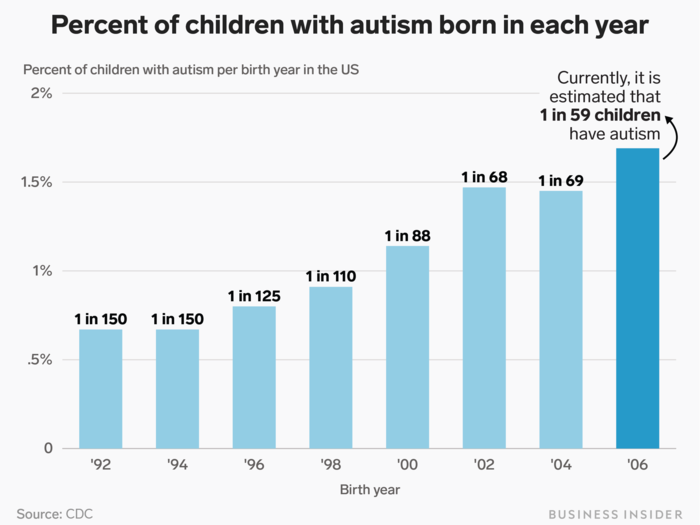
Autism numbers may be going up because we have better ways of monitoring and assessing symptoms that were once just considered personality quirks.
One other reason there may be more autism cases now: people are waiting longer to have children. Autism is more common in kids of older parents.
Psychiatrist Leo Kanner first coined the term "infantile autism" in 1943, but autism symptoms were documented and recognized as far back as the 1700s.
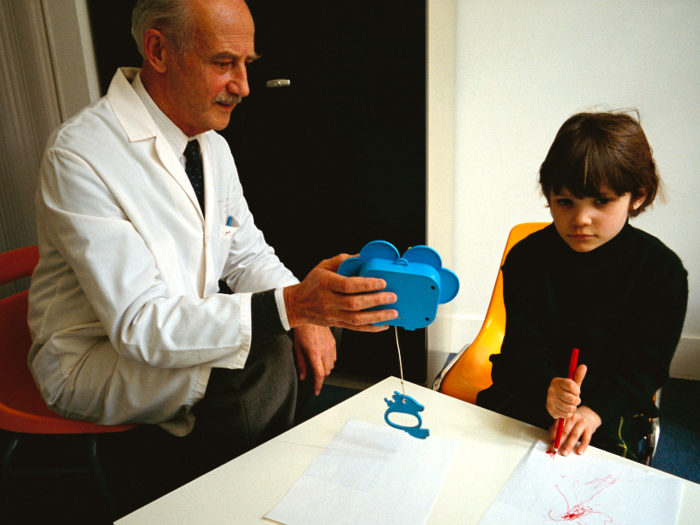
Autistic people may have trouble keeping up a typical back-and-forth conversation, less interest in sharing their interests or emotions with others, and difficulty with both verbal and non-verbal communication. This can make regular eye contact, body language, and facial expressions harder to understand and use.
Some autistic kids have a hard time making friends or sharing imaginative playtime with others, and struggle to adapt their behavior to different social situations. They might also have rigid thinking patterns, and a religious adherence to daily routines, to the point where subtle changes in a schedule or environment are difficult to handle (like a dentist appointment or a new couch).
Autistic people have feelings — they may just not express them in the same ways as others.

Temple Grandin, an autistic animal scientist, says she has an extremely visual mind, and thinks in vivid pictures displayed in near photo-crisp detail.
She also finds deep pressure calming, and once put herself in a cow squeeze chute.
"I tried out the squeeze chute, and it calmed down my nerves," she told the CBC. "You see there's a number of kids on the autism spectrum that will seek deep pressure on wide areas of their body, and it will calm them down."
It was her fixation on those squeeze chutes that eventually led her to develop the more humane cattle restraining systems many beef farmers use today.
We still don't know for sure what causes autism, and there is no medical test for it.
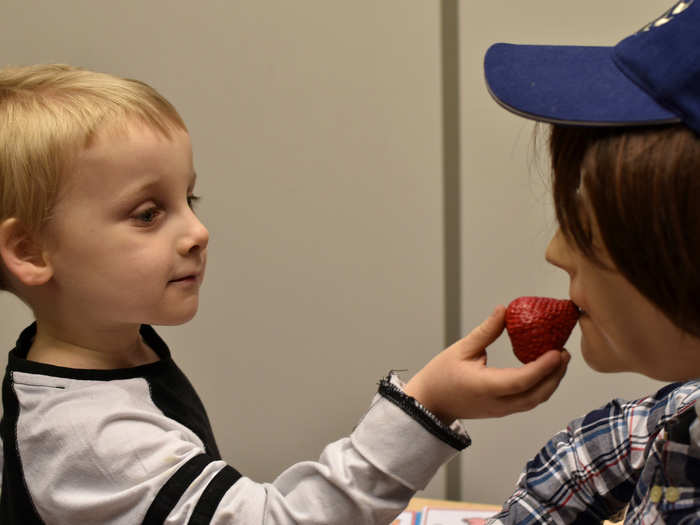
Scientists are gaining new clues about both genetic and environmental factors that might contribute to autism, but we don't know for sure why some youngsters develop autism and others don't. There is no cure for the developmental condition.
There's no evidence that autism is caused by vaccines, and the doctor who first suggested a link between the MMR vaccine (measles, mumps, rubella) and autism has been discredited.
Instead, evidence suggests there are environmental factors affecting babies and pregnant women every day that, along with genetic factors, might contribute to more autism cases. These include air pollution, households chemicals, and pesticides.
Autism is often said to be four times more common for boys than for girls, but researchers say that actually the ways we look for and measure autism may be sexist, making boys more likely to be diagnosed in the first place.
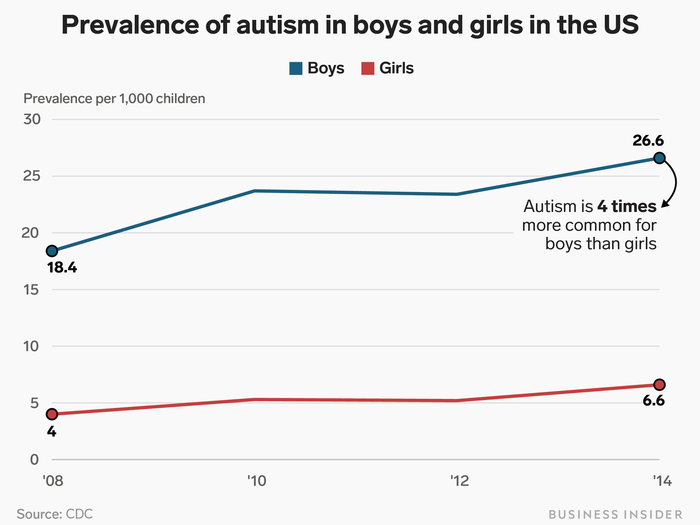
According to a 2017 study in The Journal of the American Academy of Child and Adolescent Psychiatry, the ways that clinicians screen for autism make the disorder more likely to be identified in boys than in girls. Girls may simply be better at defying some of the typical behavioral checks for autism, and their symptoms might be less obvious to teachers, family members, and doctors.
"Autistic girls have fewer troubles making friends than autistic boys; they have seemingly more ordinary interests than boys (for example horses, rather than maps of the subway)," neuroscientist Fabienne Cazalis wrote in The Conversation.
Researchers suspect the real ratio of autism in girls to boys may be more like 1 to 3.
While it's true that white children are diagnosed with autism at slightly higher rates, experts say this could just be a sign of under-diagnosis in other populations, or cultural differences.
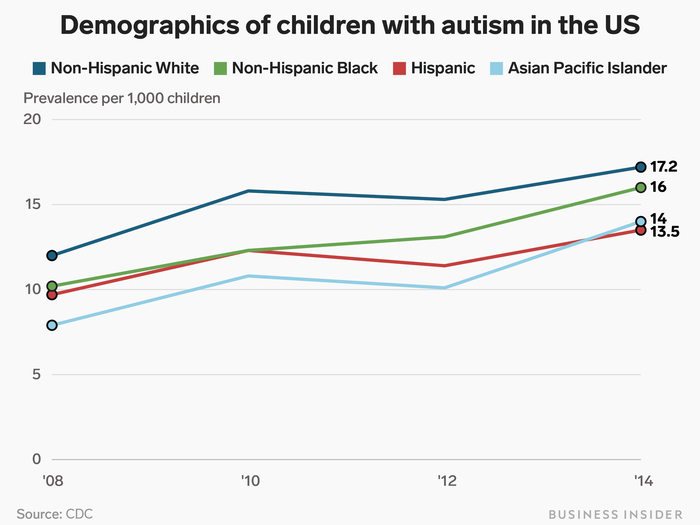
Source: Reuters
Many kids with autism are smart: 44% of children who've been identified as ASD patients were considered of either "average" or "above average" intellectual ability. But it's important to remember that just because someone has autism doesn't mean they're necessarily anti-social, or a savant.
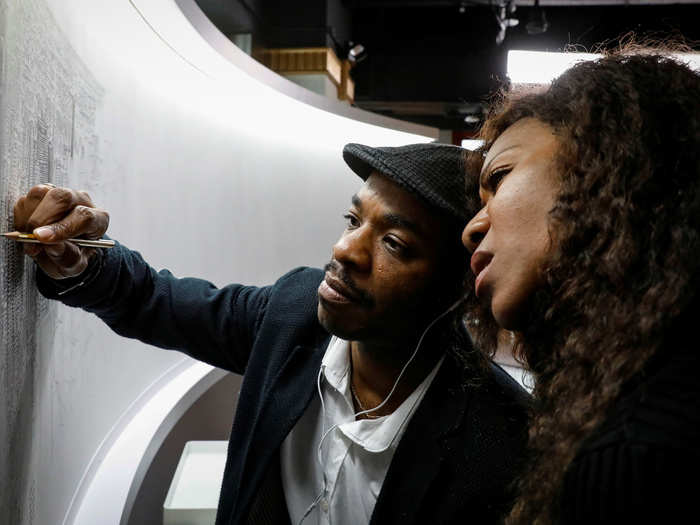
"It's a continuum of traits," Grandin said on stage at TED in 2010.
"When does a nerd turn into Asperger, which is just mild autism? I mean, Einstein and Mozart and Tesla would all be probably diagnosed as autistic spectrum today."
Autistic people often have a tendency to fixate on certain topics, subjects, or hobbies, which can help them solve problems in novel ways.
Billionaire "bond king" investor Bill Gross said he has Asperger's syndrome, a mild form of autism. Though he didn't realize it until he was in his 70s, he said it made him a different kind of investor than many of his colleagues.
"Asperger's can compartmentalize," Gross told Bloomberg. "They can operate in different universes without the other universes affecting them as much."
Not everyone with autism has a normal level of intelligence. Many autistic people have mild to significant intellectual delays, and autism care is expensive.
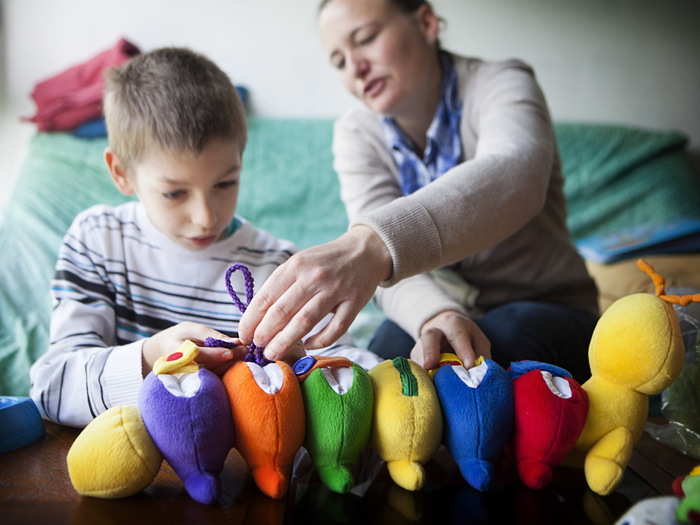
In the US, kids and teens with autism have medical bills that are, on average, $4,110 to $6,200 more expensive then their peers, every year.
In addition to that routine medical care, behavioral therapies and other autism interventions can cost anywhere from $40,000 to $60,000 per child per year.
The costs of autism aren't just limited to care for the people with autism: they also include lost parental productivity and the mental and physical effects of constant caregiving on a patients' family.
Although an autism cure doesn't exist, there are a number of treatments available to manage symptoms and help people with autism become more independent.
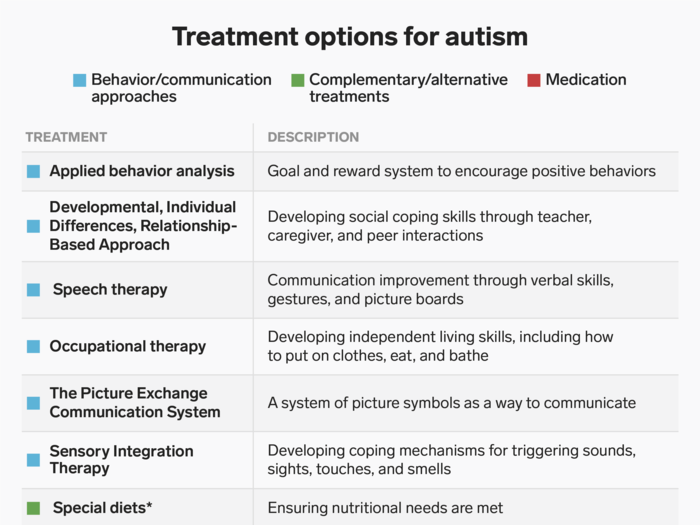
Treatments for autism include behavior-based training, medications, and alternative therapies.
Behavior-based approaches help people with autism learn how to socialize with others, deal with triggers, and pick up life skills so they can become more independent. In occupational therapy, for example, an autistic person may learn how to bathe, dress, and eat without assistance.
Since people with autism often have other conditions too, like seizures, depression, or anxiety, medications can help them manages symptoms.
Medications include SSRIs, which are typically used to treat depression, tricyclics for obsessive-compulsive behaviors, and anti-psychotic medications that may help with irritability in young people.
Not all diets and alternative treatments have been scientifically proven to help with autism, but many people incorporate these practices into their medicine- or behavior-based approaches. Diet coaching can help ensure a person with autism is getting all of the nutrients they need if they are a picky eater, for instance.
Despite increasing autism diagnoses and treatment options, much of the world has little legal-based protection or assistance for people with autism. Canada, England, France, Northern Ireland, Scotland, the US, and Wales have specific laws in place related to health and educational opportunities.
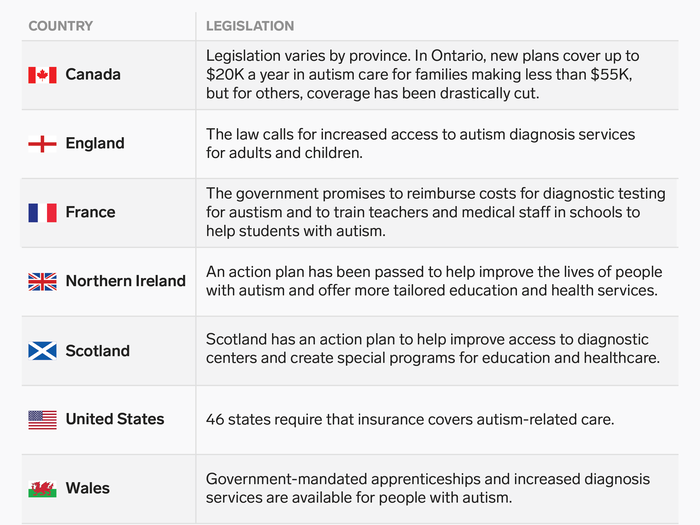
Popular Right Now
Popular Keywords
Advertisement